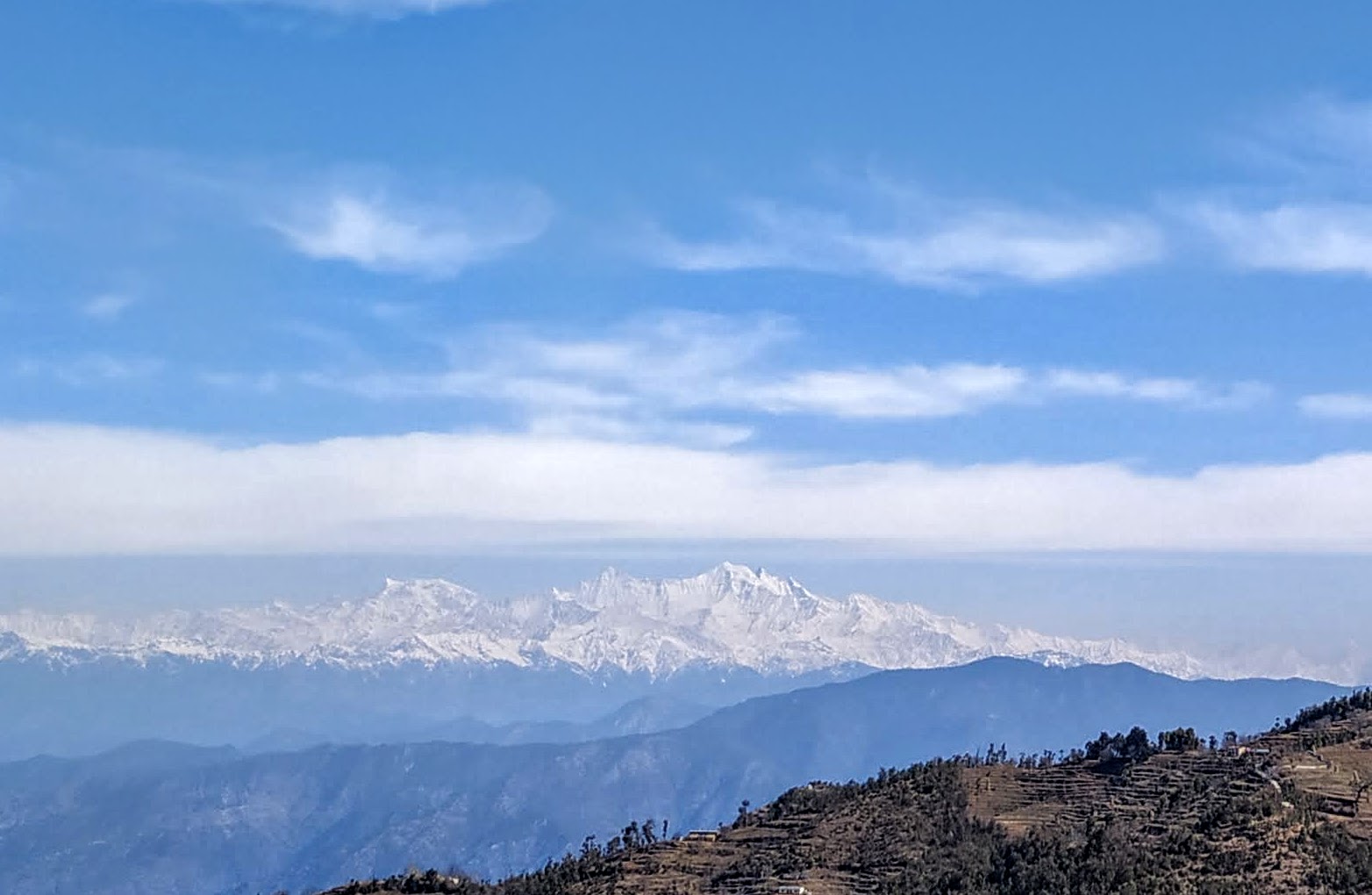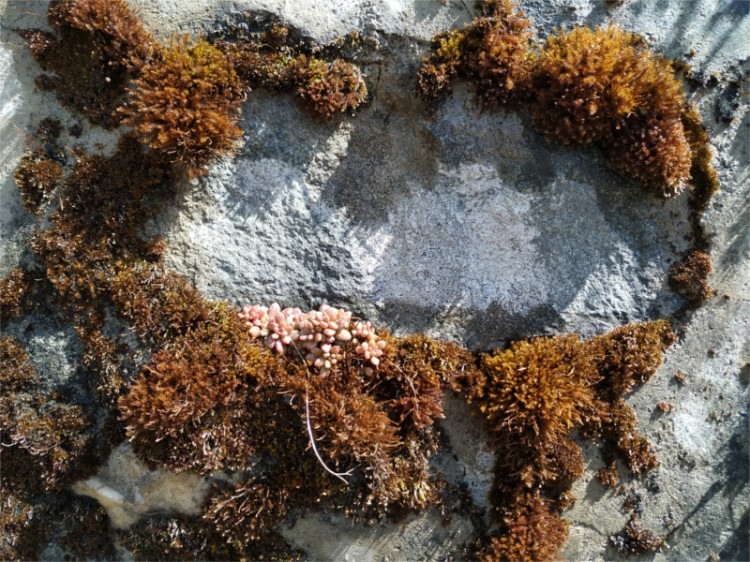When we reached our hotel with the wonderful view of the mountains from the balcony, it was a little past noon. We sat on the lawns and had a crisp thin-crust pizza and beer so well chilled that even at this height moisture was dewing the bottle as it sat on the table. The air was crisp and cool, as it should be at an altitude of over 2.5 kilometers above sea level. After lunch we could sit in the balcony, look out at the mountains and aestivate. Or we could go for a walk. We chose to walk.
The afternoon’s light was mellow. One side of the road sloped down to fields and a village spread very sparsely over the hillside. It was nearly spring time. The snow had almost completely melted, and only shaded fields and slopes gleamed white in the afternoon. The sloping metal roofs of huts were weighed down by stones. Ruskin Bond in one of his books mentions a corrugated iron roof which was blown away in a storm and decapitated an “early-morning fitness freak”. At the sight of the stones I was reminded of that. But we were safe; this was not early morning.
The road was deserted, but suddenly there was an apparition in front of us. Was it a ghost? No. From the way it swayed and sang it could only be the village drunk. We passed an agricultural research lab where rows of apple trees had grafts on them and were beginning to bloom. A large oak on the side of the road was full of sparrows. When we stopped to watch, we saw a pair of Streaked Laughingthrush (Trochalopteron lineatum) in the undergrowth. They are shy birds, preferring to hop about under cover, and are difficult to photograph. I was not satisfied with the photos which I got.
Moss grew on walls here, poking out through the mortar between the stones. I keep thinking that I’ll try to get a field guide to the mosses of India, expect that there is no such book. As a result, I have no idea which moss I’m photographing. One of these was beginning to flower. Although the solstice was a few days away, spring had come to Garhwal’s Sivaliks already.
The shops at the turn of the road were all closed for the afternoon’s siesta. I loved their collection of preserves and juices. juice of rhododendron, mint, apple and the new citrus hybrid called the Malta were advertised, along with jams, chutneys and pickles. The British were convinced that rhododendron is poisonous, although locals have been drinking its juice for ages. We reminded ourselves that we would have to come back here later; we’ve always enjoyed drinking this juice when we are in the mountains.
We walked on for a while more, but then clouds started to drift in. The weather prediction was of light rains in the afternoon. We turned back; it would be a twenty minute walk back to the hotel. It would be time for tea when we got back.






